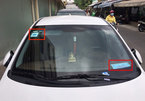 |
|
Vietnam makes a step forward by legalising ride-hailing services for the benefits of passengers and drivers |
A new door for ride-hailing businesses
The Ministry of Transport (MoT) has recently issued Decision No.146/QD-BGTVT to end the pilot programme for the application of technology in managing and connecting electronic contract-based passenger transportation from April 1.
Decision 146 puts an end to the pilot programme, paving the way for ride-hailing firms extending their services nationwide. The ride-hailing services will be subject to the new regulations stipulated in Decree No.10/2020/ND-CP, replacing Decree No.86/2014/ND-CP.
According to economist Nguyen Tri Hieu, halting the pilot programme will help align ride-hailing firms’ operation with better standards and recognise their apps as legal businesses. Given that the services are new business models in Vietnam, they should be regulated by specific regulations in line with local legislation. Also, the legal provisions need to be adjusted from time to time to keep up with the market changes.
He said that the implementation of Decree 10 will create fair competition for the different kinds of transport businesses as well as meet customers’ demand. The new provision requests ride-hailing cars to display taxi signs on their windscreen, which is in line with regulations around the world. This helps regulatory bodies to easily identify privately-held cars from ride-hailing ones, making it easy to improve regulations.
More benefits for driver-partners
The pilot programme for ride-hailing services will officially expire on April 1. Afterwards, services must comply with new regulations stipulated in Decree No.10/2020/ND-CP. However, the halt will not affect the operations of enterprises and co-operatives in the field.
Notably, Decree 10 stipulates that contract-based vehicles have to affix a contract car sign made of reflective materials on their front and rear windshields. The phrase “Contract Car” has a minimum size of 06 x 20 centimetres. In case of electronic contract-based cars, transport businesses must install devices to access e-contracts and the list of customers for drivers.
Article 36 also stipulates that all passenger cars with less than nine seats are to be given a badge for transportation services. Under Decree 86, they will have to reapply for a new badge and install it at the required position before July 1, 2021.
Outlining new regulations for ride-hailing services, Decree 10 reflects Vietnam’s efforts to regulate new business models to meet genuine local demand. The move also marks a step forward for Vietnam's constructive governance in the era of the Fourth Industrial Revolution.
It is clear that Decision 146 will bring more economic benefits to locals when ride-hailing services can be implemented on a larger scale. Passengers nationwide will have access to more convenient and modern transport modes at reasonable prices.
Under the new decree, ride-hailing firms can now expand beyond the five pilot localities. The development of ride-hailing firms to new cities and provinces will also create more employment for driver-partners. As Vietnam legalises ride-hailing services, drivers can feel secure when providing services to earn a living.
Driver Nguyen Nong Phu, a resident in District 9, Ho Chi Minh City, was glad that the new regulations do not require drivers to install taxi roof lights. Also, the expansion of ride-hailing services beyond the five pilot localities will help drivers increase their income by taking on trips to other provinces.
Nguyen Van Xang is director of An Phat Khang Co-operative in Hanoi, currently managing over 14,000 ride-hailing vehicles. He said that a lack of clear regulations under the pilot programme has sparked intensive competition and court cases between traditional taxi operators and ride-hailing firms. Decree 10 has clearly defined ride-hailing vehicles, which will benefit both drivers and passengers.
The expansion of ride-hailing services will help drivers improve their income and extend their operations to other provinces. In the past, several people moved to big cities to make a living as driver-partners. Given the upcoming development of ride-hailing businesses in other provinces, these drivers will be able to work at their hometown, which will in turn help alleviate traffic jams and employment pressure in large cities.
Commenting on Decision 146, the representative of Grab Vietnam said that the new regulation does not affect Grab’s business activities in the market. Instead of operating under a pilot scheme, Grab and other ride-hailing firms can officially operate nationwide from April 1, 2020.
“In the spirit of Decision 146 and Decree 10, we will continue our efforts to work with the authorities to better understand the new legal provisions for our business model. We will comply with the law to ensure the maximum benefits of customers and driver-partners, and to contribute to the development of the community and Vietnam," said the representative. VIR

Ride-hailing cars must display taxi signs
All cars providing passenger transportation services via ride-hailing applications will be treated like taxis from the beginning of April, when the pilot project for tech-based cars ends.

New applications enter ride-hailing market
The Vietnamese ride-hailing market has witnessed the entry of two new apps, Unicar and ZuumViet.
 Vietnam has legalised ride-hailing, opening up opportunities for ride-hailing firms and bringing more benefits to passengers and driver-partners.
Vietnam has legalised ride-hailing, opening up opportunities for ride-hailing firms and bringing more benefits to passengers and driver-partners.